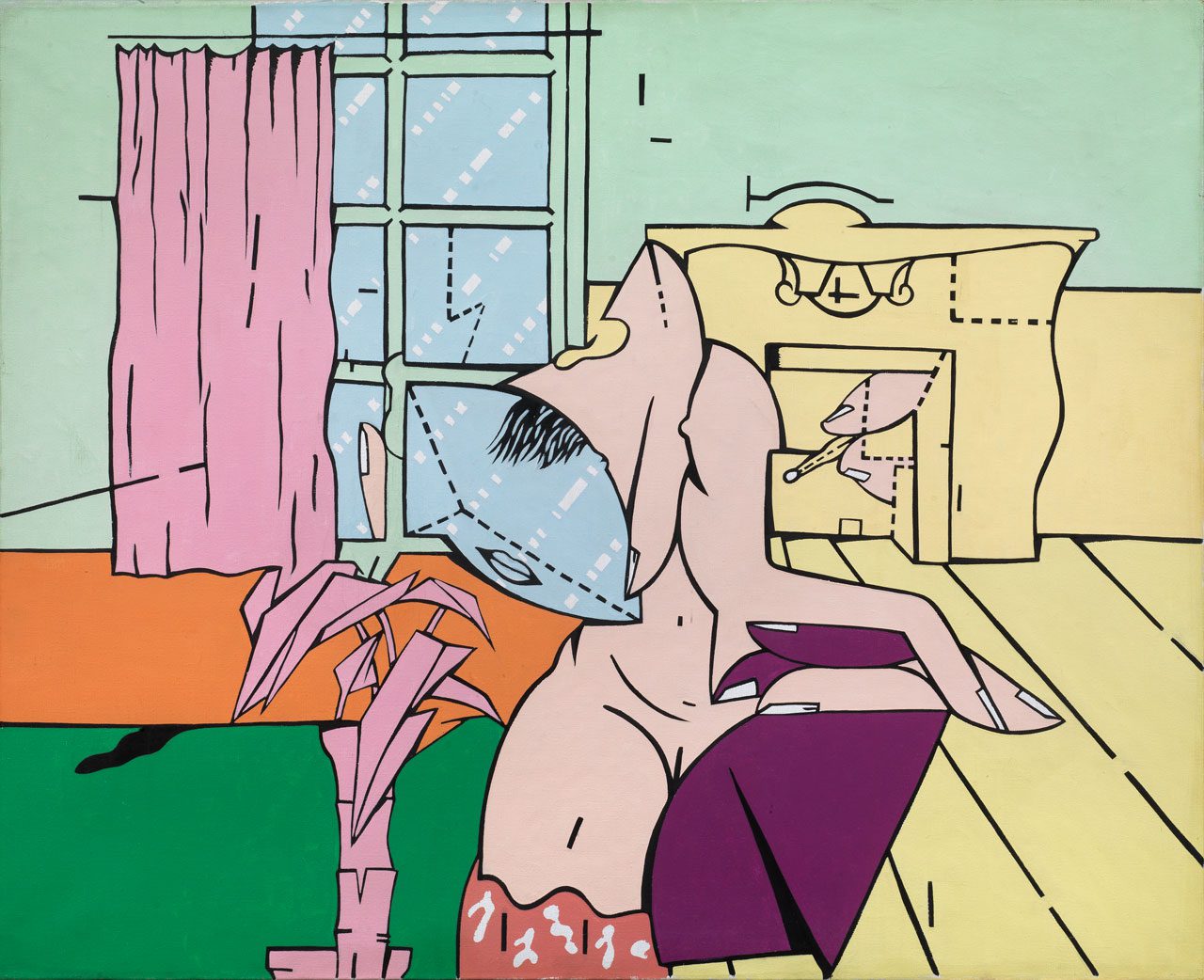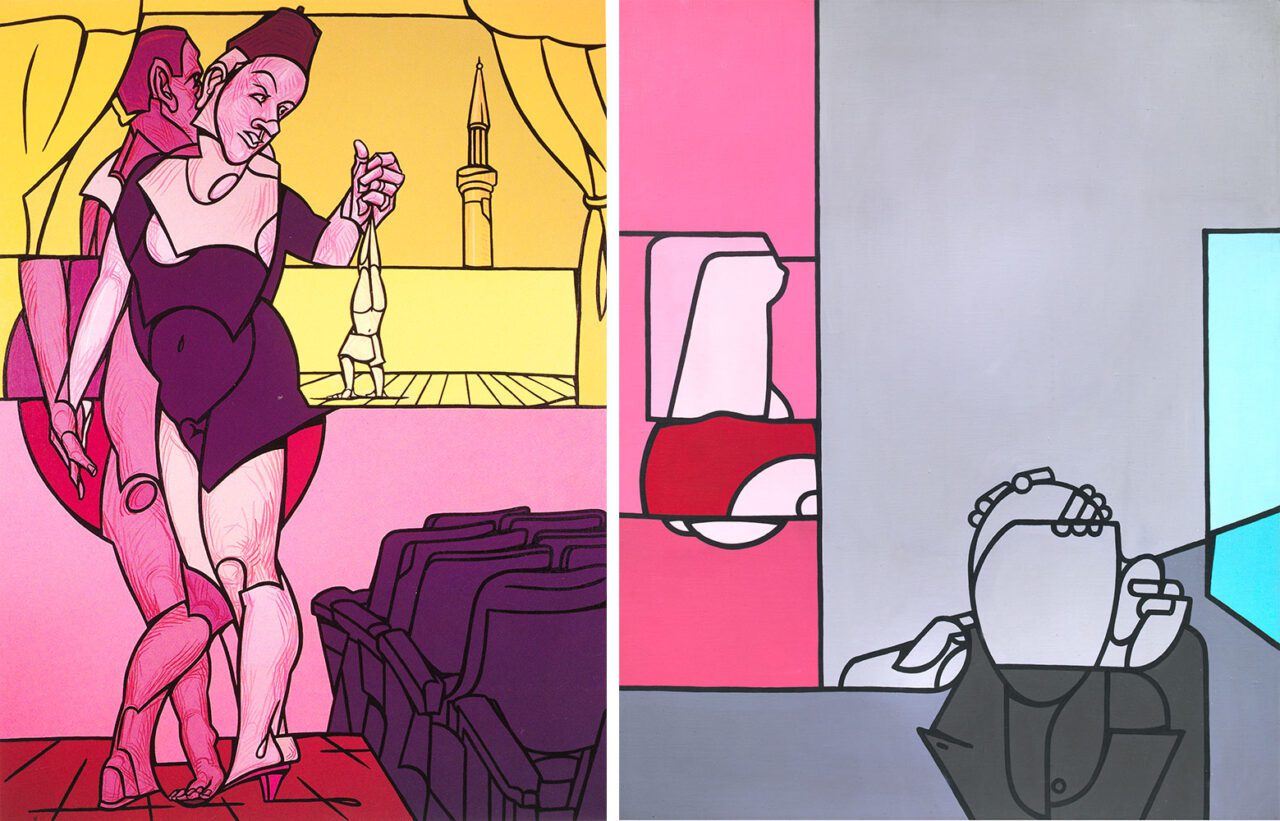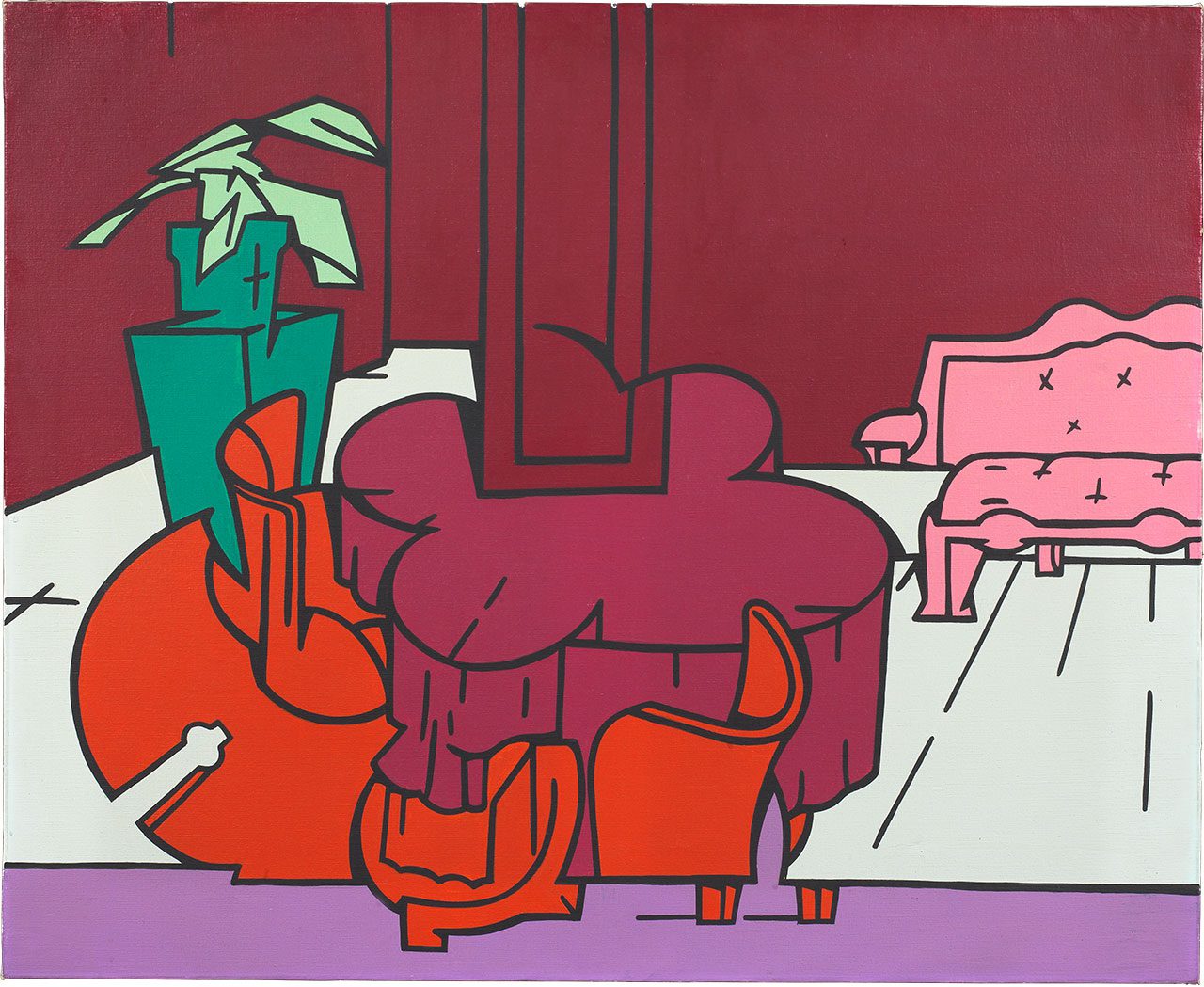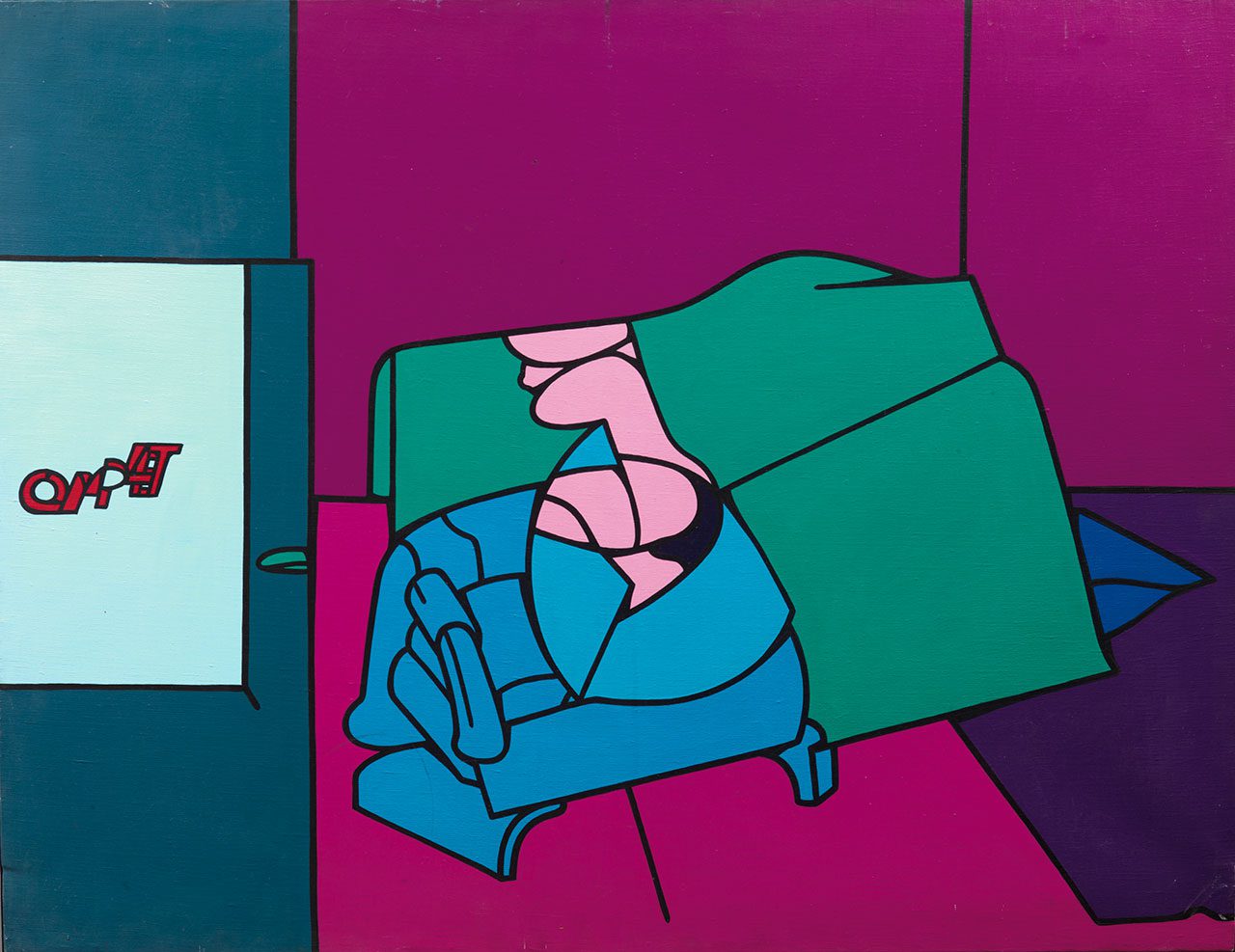PREVIEW: Valerio Adami
Valerio Adami is recognized internationally as an important European artist. They may look like comic book art, but there is a perturbing sadness to the world that Valerio Adami creates in his large-scale painting. His work can separate in three major periods. In his early Pop-related works, he offers us views of isolated fragments of modern society in which objects are taken out of perspective and context to allow us to see them anew. They were succeeded by a number of works focusing on historic moments and presentations of heroes of modern culture. The works of his most recent period are perhaps his most interesting and attractive.
By Efi Michalarou
Photo: Tornabuoni Art Archive
The exhibition that is dedicated to the paintings of Valerio Adami features a selection of canvases that showcase some of the most iconic themes defining the artist’s prolific career, spanning from the 1960s to the early 2000s. Marking 90 years since Adami’s birth and five decades since his first French retrospective at the Musée d’art moderne de la ville de Paris in 1970, this exhibition revisits the artist’s evolving exploration of key motifs: tributes to fellow artists, interiors, travel and the theatrical realm. Born in Bologna in 1935, Adami’s artistic journey began at Felice Carena’s atelier. His first works were influenced by expressionism and marked by his childhood memories of the end of the Second World War. A pivotal encounter with Oskar Kokoschka in Venice expanded his artistic vision, while formal training under Achille Funi at the Accademia di Brera in Milan honed his technique. “Sguardo rivolto a” (1962) exemplifies this formative period, with its subdued color palette and almost abstract qualities reflecting his evolving artistic exploration. These early influences laid the groundwork for the distinct visual language that would define his career, characterized by a vivid color palette and precise black outlines. His works are alive with dynamic hues, such as the bright pinks and purples of “Interno” (1967) and the deep blues and greens of “Teatro” (1969). While often associated with elements of Pop Art, Adami himself firmly rejected this label, as he explained in a conversation with Carlos Franqui: “I always vigorously refused the appellation of pop.” These colors are always framed in outlined shapes evoking the deconstruction of movement and objects of Cubism and Futurism. This approach is exemplified in “Fusione di una testa e di una fnestra (omaggio a Boccioni)” (1966), a tribute to a homonymous sculpture by Futurist artist. Drawing from Boccioni’s exploration of spatial demultiplication, Adami renders a fragmented nude figure, inviting viewers to discern elements such as hands, a mouth, and an ear. During the 1960s and 70s, Adami’s outlines became increasingly pronounced, as seen in “L’urlo (dedicato a E.Munch)” (1971). Here, Adami reinterprets the iconic Scream, deconstructing its composition and transforming its emotional resonance through a palette of pastel pinks and blues. Beyond his tributes to fellow artists, Adami’s work often delves into landscapes, particularly “interior landscapes,” depicting hotel rooms and bars. These interns are frequently populated by anonymous figures in various stages of deconstruction, their narratives imbued with tension through the subtle presence of a secondary figure or the suggestiveness of a carefully chosen title. In “The Bar (La lutte des sexes) n° 2” (2007), the evocative title references the “battle of the sexes,” while the central figure seems to embody more than one person. Conversely, “Interno” (1967) eschews human figures altogether, focusing instead on the stark anonymity of a hotel room. Reflecting on his fascination with these transient spaces, Adami once remarked: “For years, I painted in hotel rooms. For a long time, I lived a very nomadic life. I needed the anonymity of a place of passage to reinvent the possibility of a studio, and these journeys only took shape when they appeared on the horizontality of the sheet of paper.” Adami’s extensive travels across Europe, the Americas, and Asia profoundly shaped his worldview and artistic vision. Immersing himself in diverse cultures, he often incorporated these influences into his work. “Scenografa con minareto” (2000), for instance, evokes his journeys to the Middle East through the depiction of a minaret while simultaneously referencing one of his enduring themes: the theatre. The theatrical realm, first appearing in his paintings in the 1960s, remained a consistent thread throughout his career. From the late 1970s onward, Adami’s works increasingly drew upon the Greco-Roman world, as seen in “Homère et son guide” (1995). This painting portrays the Greek poet Homer standing before a temple, accompanied by a shepherd, a nod to a poem by 17th- century French poet André Chénier.
Photo: Valerio Adami, Complet, 1970, acrylic on canvas, 90 x 117 cm, Courtesy Tornabuoni Art
Info: Tornabuoni Art, 16 avenue Matignon Paris, France, Duration: 23/1-22/3/2025, Days & Hours: Tue-Sat 10:30-18:30, www.tornabuoniart.com/


Right: Valerio Adami, L_urlo (dedicato a E.Munch), 1971, acrylic on canvas, 100 x 81 cm, Courtesy Tornabuoni Art


